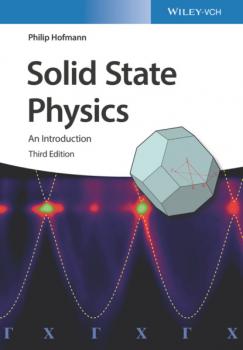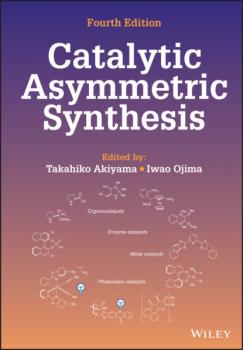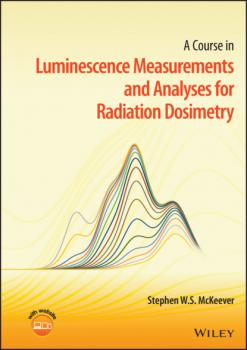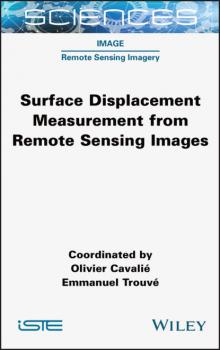ТОП просматриваемых книг сайта:
John Wiley & Sons Limited
Все книги издательства John Wiley & Sons LimitedАннотация
Enables readers to easily understand the basics of solid state physics Solid State Physics is a successful short textbook that gives a clear and concise introduction to its subject. The presentation is suitable for students who are exposed to this topic for the first time. Each chapter starts with basic principles and gently progresses to more advanced concepts, using easy-to-follow explanations and keeping mathematical formalism to a minimum. This new edition is thoroughly revised, with easier-to-understand descriptions of metallic and covalent bonding, a straightforward proof of Bloch's theorem, a simpler approach to the nearly free electron model, and enhanced pedagogical features, such as more than 100 discussion questions, 70 problems–including problems to train the students’ skills to find computational solutions–and multiple-choice questions at the end of each chapter, with solutions in the book for self-training. Solid State Physics introduces the readers to: Crystal structures and underlying bonding mechanisms The mechanical and vibrational properties of solids Electronic properties in both a classical and a quantum mechanical picture, with a treatment of the electronic phenomena in metals, semiconductors and insulators More advanced subjects, such as magnetism, superconductivity and phenomena emerging for nano-scaled solidsFor bachelor’s students in physics, materials sciences, engineering sciences, and chemistry, Solid State Physics serves as an introductory textbook, with many helpful supplementary learning resources included throughout the text and available online, to aid in reader comprehension.
Аннотация
The Ethical Journalist Praise for the Third Edition of The Ethical Journalist “A riveting examination of journalism ethics, updated for the seismic change that is now an industry constant. The Ethical Journalist is written to fortify journalism students, but real-life examples of everything from faked photographs to reporting on presidential lies make it valuable to all of us who care about the news.” ANN MARIE LIPINSKI, CURATOR OF THE NIEMAN FOUNDATION AT HARVARD UNIVERSITY AND FORMER EDITOR OF THE CHICAGO TRIBUNE Praise for the Earlier Editions “The book is superb – the definitive work on journalism ethics and practices. It should be a basic text in every school of journalism.” GENE ROBERTS, FORMER EXECUTIVE EDITOR OF THE PHILADELPHIA INQUIRER AND FORMER MANAGING EDITOR OF THE NEW YORK TIMES “At a time when the internet has turned journalism inside out and blown up long-held traditions, the need for media ethics is even more critical. This is the book to help guide students and the rest of us through the revolution.” ALICIA C. SHEPARD, FORMER NPR OMBUDSMAN The third edition of The Ethical Journalist is a comprehensive examination of current issues in the field of journalism ethics, researched and written by four journalists with experience in both the newsroom and the classroom. It gives students and professionals the tools they need to navigate the challenges of journalism today, first explaining the importance of ethics in journalism and then putting a decision-making strategy to work. The text is supplemented by case studies and essays, and two companion websites provide additional materials for educators and a forum for all users to discuss new topics in journalism ethics as they arise.
Аннотация
Seminal text presenting detailed accounts of the most important catalytic asymmetric reactions known today This book covers the preparation of enantiomerically pure or enriched chemical compounds by use of chiral catalyst molecules. While reviewing the most important catalytic methods for asymmetric organic synthesis, this book highlights the most important and recent developments in catalytic asymmetric synthesis. Edited by two well-qualified experts, sample topics covered in the work include: Metal catalysis, organocatalysis, photoredox catalysis, enzyme catalysis C-H bond functionalization reactions Carbon-carbon bond formation reactions, carbon-halogen bond formation reactions, hydrogenations, polymerizations, flow reactions Axially chiral compoundsRetaining the best of its predecessors but now thoroughly up to date with the important and recent developments in catalytic asymmetric synthesis, the 4th edition of Catalytic Asymmetric Synthesis serves as an excellent desktop reference and text for researchers and students, from upper-level undergraduates all the way to experienced professionals in industry or academia.
Аннотация
A Course in <b>Luminescence Measurements and Analyses for Radiation Dosimetry</b> <p><b>A complete approach to the three key techniques in luminescence dosimetry</b> <p>In <i>A Course in Luminescence Measurements and Analyses for Radiation Dosimetry,</i> expert researcher Stephen McKeever delivers a holistic and comprehensive exploration of the three main luminescence techniques used in radiation dosimetry: thermoluminescence, optically stimulated luminescence, and radiophotoluminescence. The author demonstrates how the three techniques are related to one another and how they compare to each other. <p>Throughout, the author’s focus is on pedagogy, including state-of-the-art research only where it is relevant to demonstrate a key principle or where it reveals a critical insight into physical mechanisms. The primary purpose of the book is to teach beginning researchers about the three aforementioned techniques, their similarities and distinctions, and their applications. <p><i>A Course in Luminescence Measurements and Analyses for Radiation Dosimetry </i>offers access to a companion website that includes original data sets and problems to be solved by the reader. The book also includes: <ul><li>A thorough introduction to the field of luminescence applications in radiation dosimetry, including a history of the subject.</li> <li>Comprehensive explorations of introductory models and kinetics, including the concepts of thermoluminescence, optically stimulated luminescence, and radiophotoluminescence.</li> <li>Practical discussions of luminescence curve shapes, including the determination of trapping parameters from experimental thermoluminescence and optically stimulated luminescence data.</li> <li>In-depth examinations of dose-response functions, superlinearity, supralinearity, and sublinearity, as well as the causes of non-linearity.</li> <li>Detailed examples with well-known materials.</li></ul> <p><i>A Course in Luminescence Measurements and Analyses for Radiation Dosimetry</i> is an invaluable guide for undergraduate and graduate students in the field of radiation dosimetry, as well as faculty and professionals in the field.
Аннотация
Drastic improvements in both access to satellite images and data processing tools today allow near real-time observation of Earth surface deformations. Remote sensing imagery is thus a powerful, reliable and spatially dense source of information that can be used to understand the Earth and its surface manifestations as well as mitigate natural hazards.<br /><br />This book offers for the first time a complete overview of the methodological approaches developed to measure surface displacement using synthetic aperture radar (SAR) and optical imagery, as well as their applications in the monitoring of major geophysical phenomena. More specifically, the first part of the book presents the theory behind SAR interferometry (InSAR) and image correlation and its latest developments. In the second part, most of the geophysical phenomena that trigger Earth surface deformations are reviewed.<br /><br /><i>Surface Displacement Measurement from </i><i>Remote Sensing Images</i> unveils the potential and sensitivity of the measurement of Earth surface displacements from remote sensing imagery.
Аннотация
Musculoskeletal Disorders Hands-on guidance and tools for the prevention of musculoskeletal injuries in the workplace In Musculoskeletal Disorders: The Fatigue Failure Mechanism, a team of accomplished occupational health experts delivers an essential and incisive discussion of how musculoskeletal disorders (MSDs) develop and progress, as well as how they can be prevented and controlled. Offering a novel, evidence-based approach to this costly problem, the book has broad implications for employers, insurers, and other stakeholders in workplace health and safety. The authors identify new risk assessment approaches based on the cumulative effects of exposure to highly variable loading conditions. These new approaches can also be applied to evaluate the efficacy of job rotation scenarios and to quantify exoskeleton efficacy. The complexities associated with fatigue failure in biological environments are also explored in addition to suggested models for understanding how the body maintains musculoskeletal homeostasis. Readers will also find: Thorough introductions to the material properties of musculoskeletal tissues and the fundamental principles of fatigue failure analysis In-depth explorations of the structure and function of the musculoskeletal system and up-to-date epidemiological research on MSDs Comprehensive discussions of validated fatigue failure risk assessment methods, including continuous exposure assessment to better quantify injury risk Insightful treatments of remodeling and healing processes as they apply to MSD risk, as well as factors that impair the healing process, like stress, obesity, and aging Perfect for occupational and environmental health and safety (OEHS) professionals, Musculoskeletal Disorders: The Fatigue Failure Mechanism will also earn a place in the libraries of ergonomists, physical therapists, biomechanists, industrial hygienists, occupational physicians, orthopedists, and musculoskeletal disorder researchers.










